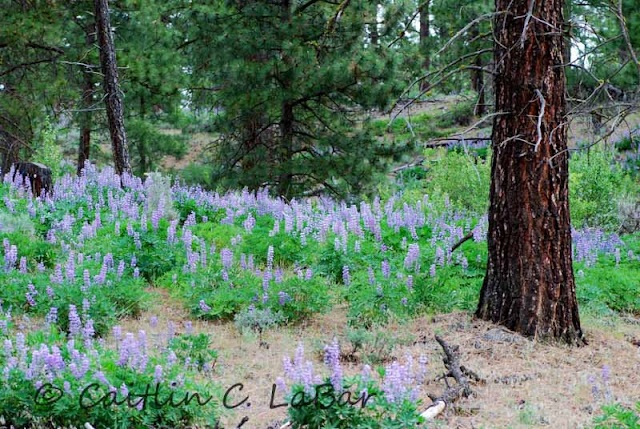The genus
Oeneis, a group of butterflies called "arctics", have a two-year life cycle. Although some species appear to fly every year because of alternating populations, other species only fly every other year, with occasional sightings in "off" years depending on the location. In Washington, the even-numbered years are when most
Oeneis populations emerge as adults.
Washington is home to four species of
Oeneis: Great Arctic (
O. nevadensis), Chryxus Arctic (
O. chryxus), Melissa Arctic (
O. melissa) and Macoun's Arctic (
O. macounii). The range of the latter two is primarily in Canada and only slightly dips in Washington along the border. Chryxus Arctic is also primarily found in the northern counties, with small scattered populations in other parts of the state. The Great Arctic is found throughout the Cascade Mountain Range, from British Columbia to northern California.
Arctics are sexually dimorphic (males and females have slightly different markings). Chryxus, Great, and Macoun's arctics are very similar, particularly the females, making it difficult to differentiate between the three species. If you plan to spend time in the mountains this summer, watch out for these brown beauties on the roads - they love to bask in the sun and are perfectly camouflaged against the rocks and dirt of forest roads! In the event you plan to visit Okanogan, Ferry, Stevens or Pend Oreille counties, where the Great Arctic gives way to the Chryxus Arctic, here is a guide to determining which species you see:
Both species
Egg - white
Larva - multiple horizontal stripes in different shades of brown.
Pupa - brown with dark, almost black head and wing casing.
Adult - Great Arctic is larger and eyespots are usually larger and less numerous than Chryxus Arctic.
Great Arctic - Oeneis nevadensis
Overwintering Stage - 1st winter as mid (2-3) instar larva, 2nd winter as final (5) instar larva.
Wingspan - 50 to 67 mm
Male - dorsal is golden orange with large dark brown discal cell and stigma. Dark wing margins are flecked with white, creating a scalloped appearance. One to three eyespots on FW and one on HW, on both dorsal and ventral sides. VHW heavily mottled dark brown, gray and white. VFW is similar to but lighter than DFW, with gray and white mottling near the apex.
Female -
DFW cell lacks stigma and is not as heavily marked with brown; eyespots are usually larger with distinct white pupils.
 |
Male Great Arctic (Oeneis nevadensis) Female
Red Top Mountain, Kittitas County, Washington
|
Chryxus Arctic - Oeneis chryxus
Overwintering Stage - 1st winter as first instar larva, 2nd winter as late (4-5) instar larva.
Wingspan - 44 to 57 mm
Male - dorsal is light gold to deep orange-brown with large dark brown discal cell and stigma. Dark wing margins are flecked with white, creating a scalloped appearance, but not as striking as the Great Arctic. One to four eyespots on FW and one on HW, on both dorsal and ventral sides. VHW heavily mottled dark brown, gray and white. VFW is similar to but lighter than DFW, with gray and white mottling along wing margins and apex, more than Great Arctic.
Female -
DFW cell lacks stigma and is not as heavily marked with brown.
 |
Male ChryxusArctic (Oeneis chryxus) Female
Sinlahekin Wildlife Area, Okanogan County, Washington |







































